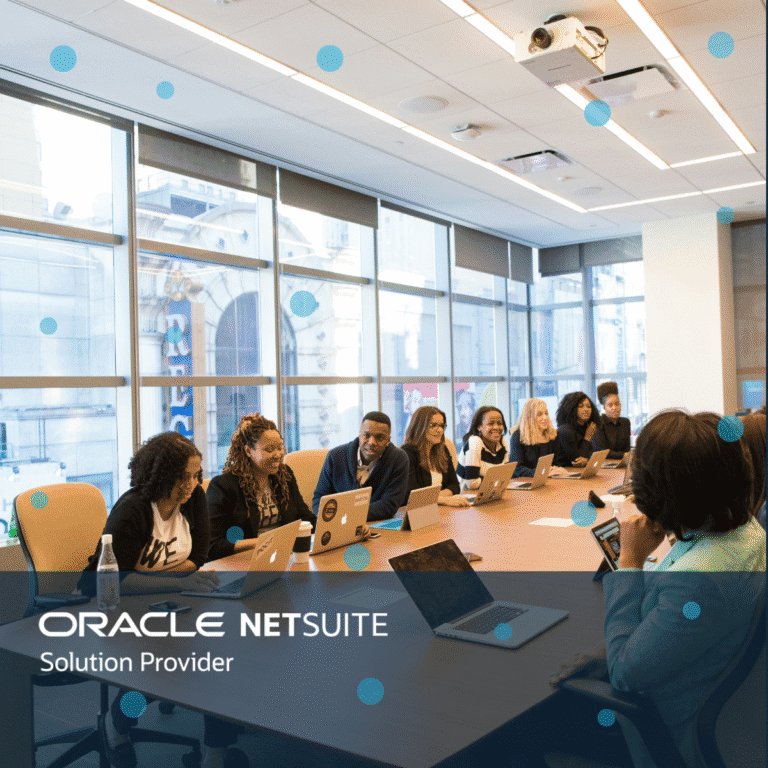Inflation: What every CFO needs to know right now
Inflation hits hard – What do you need to watch right now? With NetSuite as your business system, you gain full control over metrics.
Inflation has always been a factor to consider, but for a long time, it remained low and stable, meaning it wasn’t a top priority for many business leaders. However, in recent years, it has surged rapidly, impacting everything from wage costs to pricing and investments.
So how can you, as a CFO, navigate this economic storm?
By understanding and monitoring the right economic indicators. Here are four critical inflation metrics you need to track to make better business decisions.

Inflation continues to put pressure on businesses – but with the right strategy and business system, it can be managed and turned into a competitive advantage.
1. Consumer Price Index (CPI) – How much can the market bear?
CPI measures price changes in a “basket” of goods and services—essentially what consumers actually pay. It is one of the most widely cited inflation metrics and is used to adjust social benefits and financial contracts.
Why is it important?
If you raise prices faster than CPI, customers may opt for cheaper alternatives or drop out entirely. Conversely, if CPI soars and you don’t adjust your prices, your margins may be squeezed.
How to act:
- Use CPI as a benchmark for pricing and customer willingness to pay.
- Review your business strategy to adjust your product portfolio if needed.
2. Producer Price Index (PPI) – What does it cost to produce?
Unlike CPI, which focuses on end-customer prices, PPI measures price changes that manufacturers receive for their goods and services. This makes it a leading indicator of inflation—if PPI rises, you can expect your own costs to follow soon.
Why is it important?
If raw material, energy, and production costs skyrocket and you don’t adjust your prices, your margins will be eaten away.
How to act:
- Monitor PPI to anticipate cost increases in your supply chain.
- Negotiate long-term contracts with suppliers to secure stable prices.
3. Personal Consumption Expenditures Index (PCEPI) – the Fed’s preferred indicator
The Personal Consumption Expenditures (PCEPI) Index is the Federal Reserve’s primary measure of inflation. It accounts for both direct and indirect consumption (e.g., healthcare paid by employers) and is considered to better reflect the real economy than CPI.
Why is it important?
If the PCE index signals that inflation continues to rise, we can expect more interest rate hikes – impacting business loans, investments, and growth plans.
How to act
- If interest rates keep rising, review your capital structure and avoid unnecessary debt
- Plan for different scenarios by incorporating interest rate risks into your strategic planning
4. Employment Cost Index (ECI) – wage pressure is increasing
With labor shortages in many industries, wage inflation is a reality. The Employment Cost Index (ECI) measures changes in the cost of wages and benefits – and right now, the trend is upward.
Why is it important?
If wages rise without a corresponding increase in productivity, maintaining profitability can become challenging.
How to act
- Review your salary structure and reward systems, can you compete with more than just higher wages?
- Automation and efficiency improvements can be key to reducing labor costs

When labor costs rise, maintaining balance is key – the right business system can make all the difference.
Future-proof with the right strategy and business system
Keeping track of inflation metrics isn’t just about understanding the economy – it’s about staying in control. When you see how price changes impact both customers and suppliers, you can make decisions that strengthen your company’s competitiveness rather than being forced to react after the fact. Strategic leadership requires data and insights to guide the way, not gut feelings or panic responses.
With a flexible and scalable business system like NetSuite, you gain real-time data, automated financial processes, and tools to optimize cash flow, cost structures, and growth strategies. Do you want to lead your company forward—not just navigate through the crisis, but also uncover new business opportunities? Then having the right business system is a critical competitive advantage.
Want to learn more about inflation metrics and their impact? Read more here.



